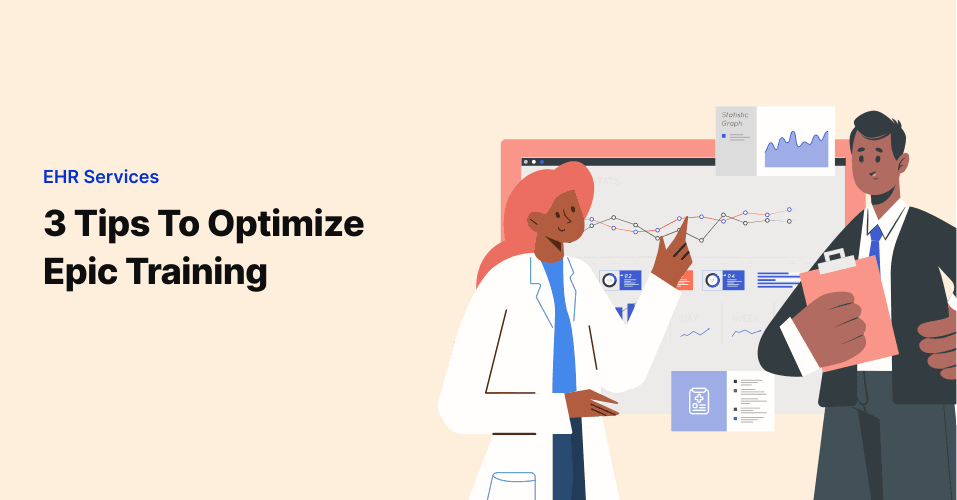
Training in a Covid World
Despite recent challenges in the world of training and EMR implementation, training still remains just as …

Jerrie Rankin, VP of Operational Informatics with Baylor Scott & White Health, and Nicholas Edwards, Senior Manager Enterprise Technical Training and Support, Baylor Scott & White Health, join CHIME Media for a podcast to talk about how training initiatives helped empower and prepare their teams for the Covid-19 pandemic.
Ryan Seratt, Director of Training with 314e, chats with Jerrie and Nicholas about this project, as 314e is a partner with their team.
The following is Part 1 of 3 blog posts that follow the full transcript of the recent CHIME Media podcast. Click here to listen to the Podcast recording on CHIME’s website.
Ryan Seratt: Hello, and welcome to the podcast. My name is Ryan Seratt, and I’m the Director of Digital Training for 314e Corporation. Today, we’re speaking with two training leaders from Baylor Scott and White Health about how recent training initiatives have played a major role in preparing, empowering, and redirecting staff resources to respond to the COVID-19 pandemic. I’d like to introduce you to Jerrie Rankin. Jerrie has over 27 years of experience as a physician practice leader and is currently the Vice President of Operation Informatics at Baylor Scott & White Health. She is the enterprise organizational strategic liaison for system informatics, the executive operational bridge to technical teams. She’s responsible for the alignment of technical EHR training teams across the system and provider and end-user proficiency leadership.
Also with us is Nicholas Edwards, a senior Training Manager with Baylor Scott & White Health. He’s been with Baylor Scott & White Health for the last nine years and has led the implementation of computer-based training throughout the system. In addition, Nick has led the initiative of the EHR and other technology at several organizations and has extensive background in developing innovative training solutions, instructional design and workflow redesign, and lean methodology. Having worked with Nick over the last year, I can see how he incorporates that lean thinking into a lot of his decisions. We’re excited to have you both with us today. Welcome. Thank you.
Jerrie, could you please tell us a little bit about Baylor Scott & White Health?
Jerrie Rankin: Sure, I’d be happy to give you a quick overview. So, Baylor Scott & White Health is the largest not-for-profit health care system in Texas. We have over 50 hospitals, ambulatory clinics, surgery centers, and pharmacies; we even have a health plan. So, you name it; we are a complete healthcare system. To put it in perspective, our geographic spread is basically the size of the entire state of Indiana. We have over 49,000 employees, and we work with around 7,500 physicians.
Ryan Seratt: Oh, that’s a big footprint. The Covid-19 pandemic has disrupted so many aspects of our lives right now, both personally and professionally. We’ve all heard about healthcare organizations that are struggling to adequately staff their ICUs and other departments that are providing care to affected patients. Many organizations are trying to find ways to effectively communicate changes and to train their staff, but it’s hard to bring people together to address problems when everyone has to be six feet apart. However, that isn’t what’s happening at Baylor Scott & White Health and why we’re here to speak with you today.
Jerrie, can you tell us about your solution? How has Baylor Scott & White Health been able to effectively communicate changes and updates to the end users to support the organization’s Covid-19 response?
Jerrie Rankin: Yes, I’d be happy to. So, what’s surprising about our solution is that we were already preparing for something like this over the past 18 months, and we didn’t even realize it. You know, none of us knew we were coming on a pandemic. And as we were working on this, we did not know that we would be in a situation where we would need to communicate policy and system changes on a daily basis very quickly, and sometimes hourly. Also, we would have to be able to flex in such a way that would allow us to quickly cross-train end users to meet the needs of the organization. So, I said we were already prepared. So how did we do it? First of all, I want to start by explaining a little bit about the team. The team that did this work is our enterprise technical training and support team. We are informatics; we are not IS. We can collaborate really well with IS. We communicate with them on a daily basis and have a great working relationship. But, us being an informatics gives us the ability to be closer to the business because we really are the bridge between operations and technology.
Jerrie Rankin: The training team being positioned in informatics has ensured our training program has been a priority. And because of that, we were positioned well to transition to computer-based training modules. So basically, over the last 18 months, we have replaced all of our instructor-led training with computer-based training. I have to tell you that when we started on this journey, we got some pushback. Internally, people that were like, well, ‘you can’t do away with instructor-led.’ But, we knew that we had to be scalable for our geographic size and our team member size.
We’re a big territory, and we have a huge headcount. It’s important for us to be able to deliver the training quickly because the business wants it quickly and also consistently across the entire enterprise. In doing our computer-based training planning, we contracted with Ancile. Ancile is our vendor to help us implement uPerform®. uPerform® is a content management system that has content development, as well as content deployment. This platform worked really well for us in developing our computer-based training. All of that was in place when this Covid-19 thing came. We were able to quickly develop cross training curriculum from what we had already developed to meet the needs of our business because our resources were being asked to go support the ICU go support Ed go from outpatient to impatient. So, by having that computer-based training already complete, we were able to flex very quickly, which helped us be prepared for our COVID-19 training needs.
Jerrie Rankin: We weren’t necessarily prepared for the communication challenges that were to come, and maybe we didn’t even realize this. But I’m happy to say that our team was able to rise to those challenges because of the groundwork that we had already laid. We were able to leverage uPerform® even more to provide on-demand access to critical information via two different access points within Epic. Organizationally, like all other organizations, we have a ton of ways to communicate with each other. We do it through Teams, we do it through WebEx, we have Zoom, we have SharePoint sites. There are almost too many ways.
Our end users get bombarded from a lot of different angles, so our goal was to cut through all that noise to provide a one-stop shop for information. The changes come daily, and sometimes multiple times a day. We wanted our end users to have access to the most updated information when it was happening. We accomplished this by leveraging uPerform® to put a COVID-19 button in the patient header right within their normal workflow. And that came from the content deployment part of uPerform®, something that we were getting ready to start exploring anyway. What this did was this drove everyone to one place. We don’t have to worry, or they don’t have to worry, about misplaced emails, or rifling through tip sheets, or hunting down SharePoint sites. They are able to just click a button right in their workflow and get the resources they need.
Additionally, we added a video visit button in that workflow; we’ll talk about that a little bit later in the podcast. But one of the things, Ryan, that I really want to point out is the differentiator here is that this training team has a very small and mighty technical team. We are able to bring technology solutions straight to the business. We don’t have to filter through a robust IS approval process which is necessary, especially for an organization our size and we work with on a routine basis. But in this particular situation, we were able to take that technology solution straight to the business quickly. We would not have been able to do that without having this small, mighty technical team on our training side.
Join over 3,200 subscribers and keep up-to-date with the latest innovations & best practices in Healthcare IT.

Despite recent challenges in the world of training and EMR implementation, training still remains just as …

Given the breadth and depth of information required to successfully train clinical staff on an EHR, it’s …

Every health system boasts an EHR training plan, but the critical question lingers: is it right on target? …